Finding out if a product will be successful beyond the initial curiosity is just good business. With market research, you determine whether the opportunity exists, how to position the product or service, or what consumers’ opinions are after the launch.
If you’re sensitive to the high costs of failure and need to gather facts and opinions to predict whether your new product, feature, or location will be successful, start by investing in market research using these tools and resources.
Here are 21 of the best tools for conducting market research, including a few recommendations directly from HubSpot market researchers. Let’s dive in.
Featured Resource: Market Research Kit
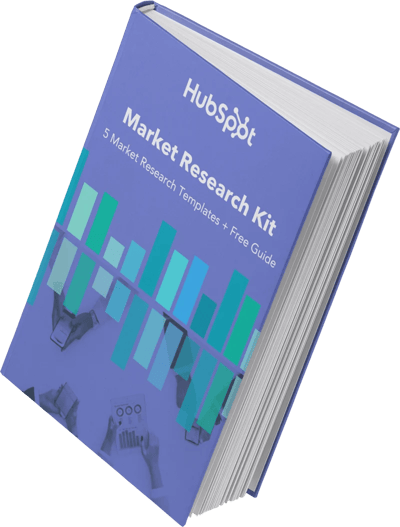
Market Research Tools
- Glimpse
- Statista
- Think With Google Research Tools
- Census Bureau
- Make My Persona
- Tableau
- Paperform
- Claritas MyBestSegment
- SurveyMonkey
- Typeform
- Upwave Instant Insights
- Loop11
- Userlytics
- Temper
- NielsenIQ
- Ubersuggest
- Pew Research Center
- BrandMentions
- Qualtrics Market Research Panels
- Qualaroo
Helpful Market Research Tools & Resources
1. Glimpse
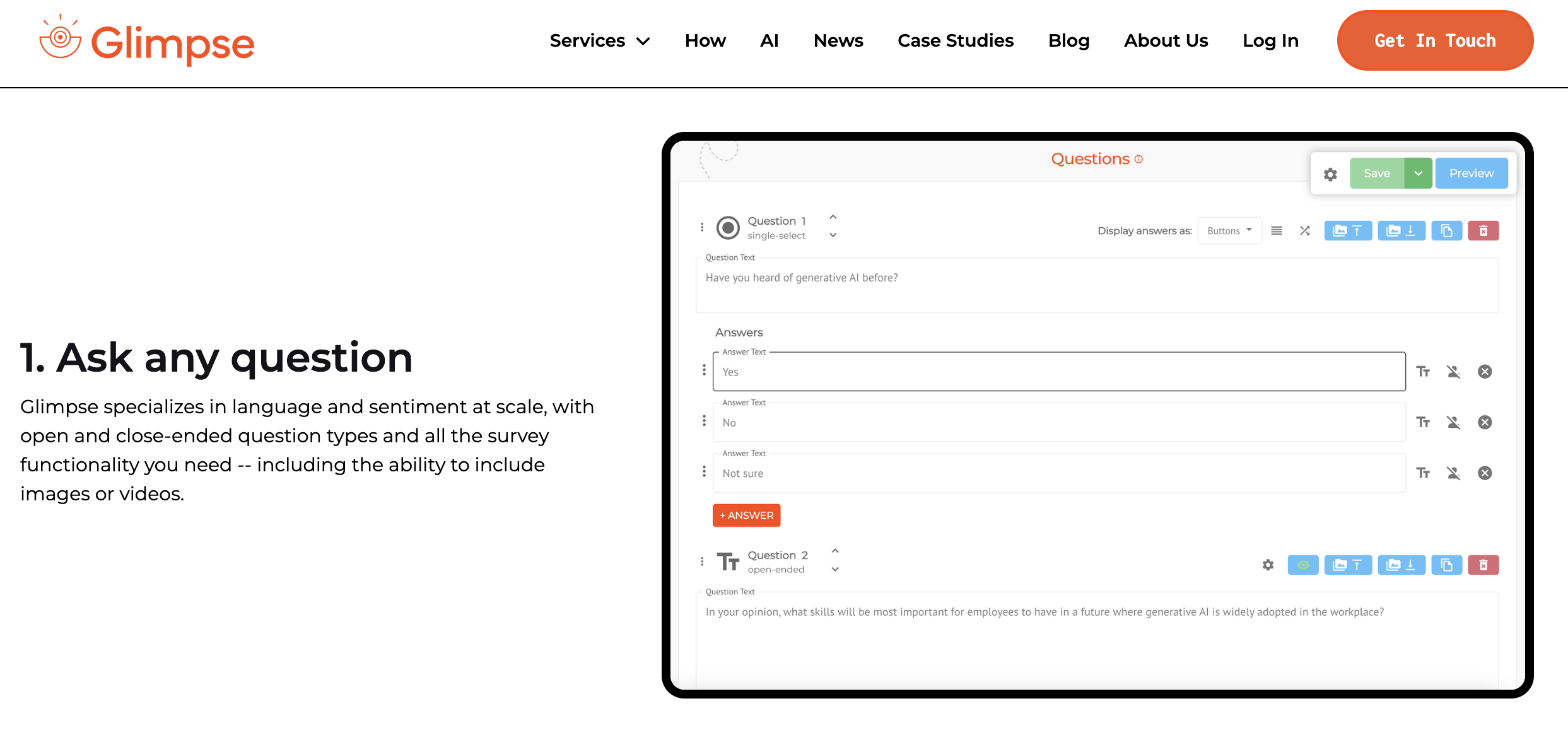
For Max Iskiev, Market Research Analyst at HubSpot, one research tool stands out from the rest, and that’s Glimpse.
He told me, “Glimpse is my favorite research tool. It’s quick and easy to use, allowing me to design and launch short surveys for real-time insights on trending topics.”
As a writer for the HubSpot Marketing Blog, I’ve also used Glimpse to run short, 100-person surveys for articles (case in point: Are Sales Reps Rushing Back to the Office?).
Not only is Glimpse valuable for doing quick pulse-checks on the latest trends, but it also leverages the power of AI for even deeper insights.
“Glimpse really shines when it comes to open-ended questions, using natural language processing and AI to analyze emotion and sentiment, saving time and offering invaluable insights,” Iskiev shared.
Pricing: $1,000/month (Pro Account)
2. Statista
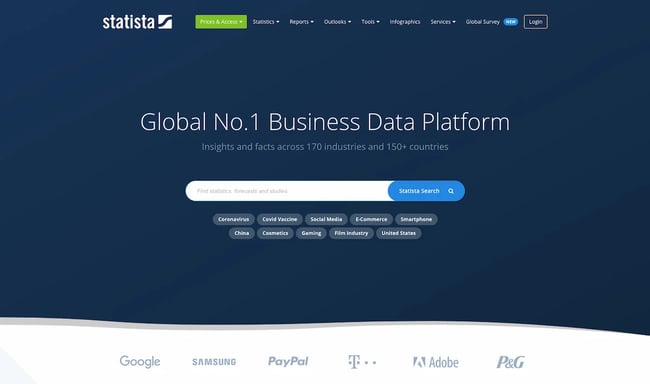
Statista is a data visualization website that takes data from reputable reports across the web and makes them easy and digestible for researchers, marketers, and product creators just like you.
“Statista is like my market research sidekick, giving me all the data I need without the endless search. No more digging through the haystack, with Statista I can spot trends and make informed decisions with ease,” Icee Griffin, Market Researcher at HubSpot, told me.
Are you planning on launching a new video game and want to know how many hours people spend playing video games? There’s a chart for that.
One neat aspect of using Statista is that the same chart is updated as the years pass. Say that you want to allude to the value of the beauty market in your proposal. If your investor accesses that same graph a year from now, it will reflect updated numbers, as Statista always finds the most recent research to update their visualizations. (Note that Statista doesn’t carry out original research.)
Pricing: Free; $39/month (billed yearly); $1,950 (one-time 30-day access)
3. Think With Google Research Tools
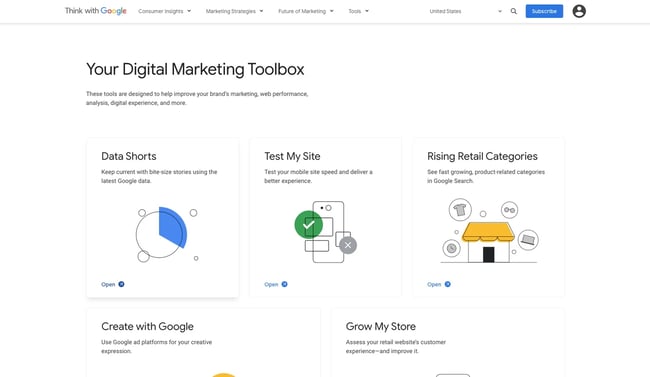
Wish you had information on your product’s likelihood of success? Think With Google’s marketing research tools offer interesting insights on whether anyone is looking for your product (Google Trends), which markets to launch to (Market Finder), and what retail categories rise as the months and seasons pass (Rising Retail Categories).
If you’d like to market your product through YouTube, the Find My Audience tool allows you to investigate what your potential viewers are interested in and what you should discuss in your brand’s YouTube channel.
Pricing: Free
4. Census Bureau
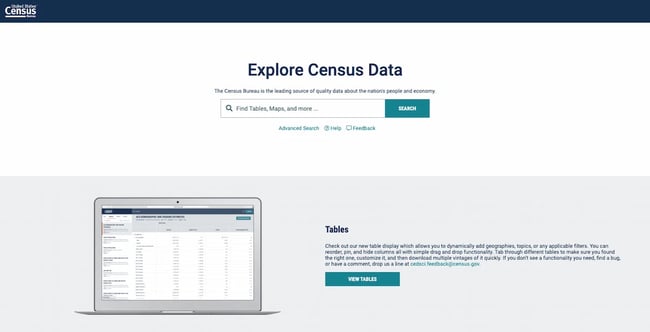
The Census Bureau offers a free resource for searching U.S. census data. You can filter by age, income, year, and location. You can also use some of its shortcuts to access visualizations of the data, allowing you to see potential target markets across the country.
One of the best ways to use this tool is by finding the NAICS code for your business, then accessing the Tables tool, then clicking Filter on the sidebar and searching for your industry. Easily find out where your target industry is most popular — or where the market has been oversaturated. Another helpful tool is the Census Bureau Business and Economy data, where you can also target premade tables depending on your industry.
Pricing: Free
5. Make My Persona
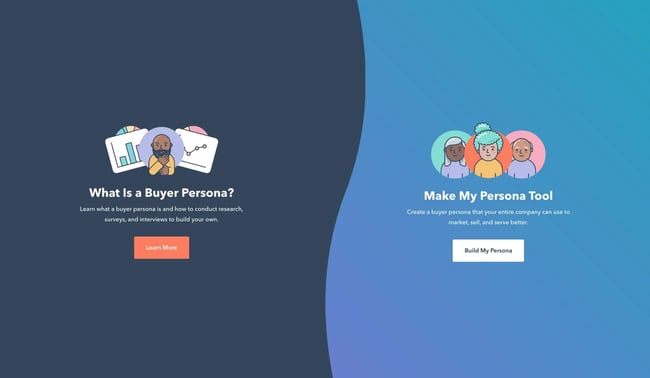
HubSpot’s Make My Persona tool allows you to create a buyer persona for your potential new product. In this tool, you pick a name for the persona, choose their age, identify their career characteristics, and identify their challenges, allowing you to pinpoint both demographic and psychographic information.
This tool is most suited for B2B product launches because you’ll be prompted to document your buyer persona’s career objectives and role-specific challenges. As such, your product would ideally solve a problem for them in the workplace or help their company achieve revenue goals.
Pricing: Free
6. Tableau
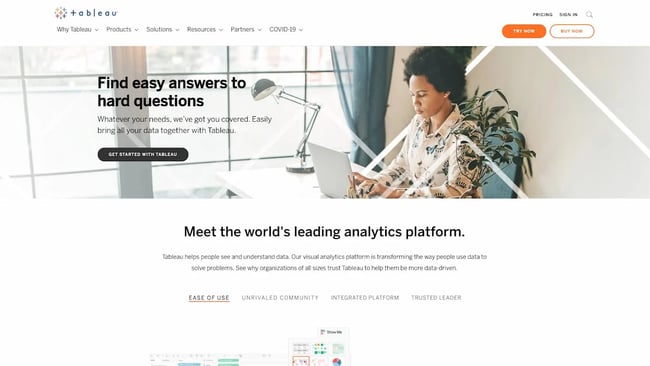
Tableau is a business intelligence suite of products that allows you to “connect to virtually any data source.” But the data isn’t presented in unreadable tables. Rather, Tableau helps you visualize this data in a way that helps you glean insights, appeal to external stakeholders, and communicate the feasibility of your product to potential investors.
You can visualize data on anything from corn production in tropical climate zones to office product sales in North America. With Tableau’s tools, you can take as granular or as general a look you’d like into potential marketplaces and supplier regions. Tableau also integrates well with spreadsheets and databases so that you can export Tableau data to Excel, back up records in Amazon Redshift, and more.
Pricing: $12/user/month (Tableau Viewer); $35/user/month (Tableau Explorer); $70/user/month (Tableau Creator)
7. Paperform
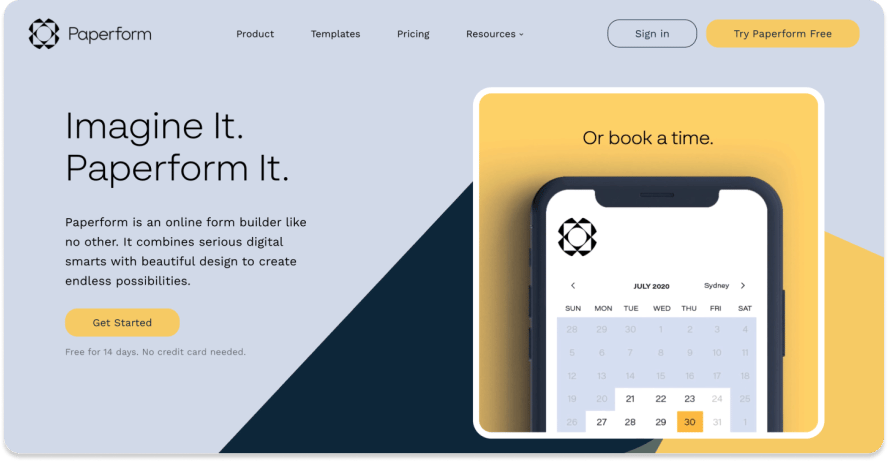
A market research survey is an effective way to understand your target audience and their needs better by asking them directly. Since this step is integral to understanding your dream customer’s problems, you want to ensure the process is as interactive as possible and incites an objective and accurate response.
With its free-text interface, Paperform is as simple as writing a word document. Make your survey stand out by customizing colors, fonts, layouts and themes, and create your unique look and feel. f you’re unsure where to start, you can use one of their expertly made questionnaires or market research survey templates to get you started.
With Paperform, you can add conditional logic to show or hide questions or whole sections of content. Create fully personalized paths for different personas to create more interactive forms that lower drop-off rates and boost customer interaction. Or use any of the 27+ question fields, like the ranking, matrix, or scale fields, to create visually engaging ways to collect information.
Pricing: Free (14-day trial); Essentials ($20/month); Pro ($40/month); and Agency ($135/month)
8. Claritas MyBestSegment
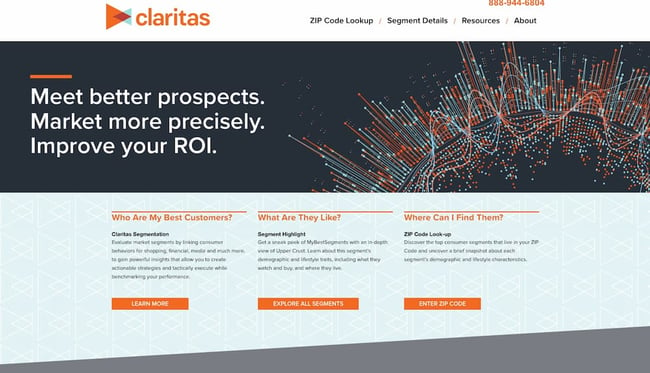
Claritas MyBestSegment provides product researchers with tools to understand an area’s demographic information and the area’s inhabitants’ lifestyle habits. By finding out what a segment of the population does — without having to go out and survey them — you can find out which areas would be most receptive to a campaign or launch, which competitors are located nearby, and which lifestyle trends have shifted or are on the rise.
A snapshot of an audience segment gives you basic information on their household income, lifestyle traits, employment levels, and education levels. If you want more specific data relating to these topics, you’ll have to contact Claritas’ sales team to become a customer.
Pricing: Free; Pricing available on request
9. SurveyMonkey
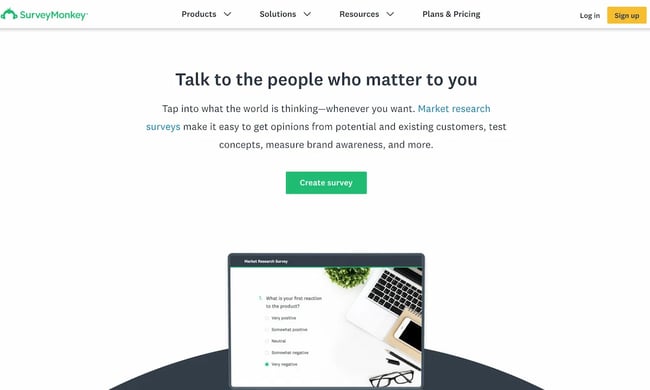
SurveyMonkey is a powerful tool for creating in-depth market research surveys that will help you understand your market and consumer preferences.
With this tool, you can create targeted, uber-specific surveys that help you collect answers that pertain specifically to your product. While using a data source can give you a general overview of your target audience and market, SurveyMonkey can help you get more granular insights from real consumers.
SurveyMonkey offers dedicated market research solutions and services, including a global survey panel, a survey translation service for international research, and a reporting dashboard option that allows you to easily parse through the results.
Pricing: Free, $32/month (Advantage Annual), $99/month (Premier Annual), $99/month (Standard Monthly); $25/user/month (Team Advantage, minimum 3 users), $75/user/month (Team Premier, minimum 3 users), Enterprise (Contact for pricing)
10. Typeform
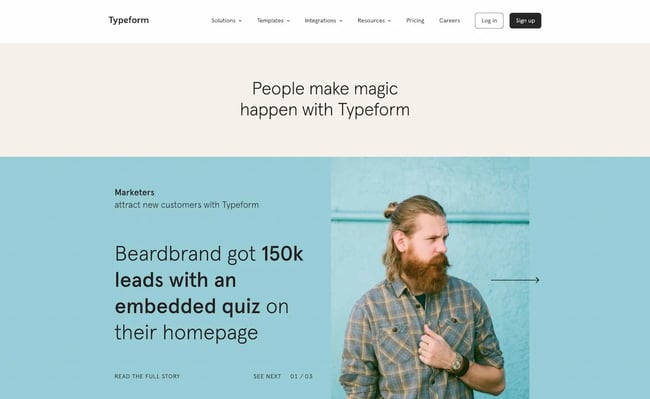
Like SurveyMonkey, Typeform allows you to run research surveys to get direct answers from your target consumers. It’s an easy-to-use, mobile-optimized form-builder that’s great for market research.
Typeform’s distinguishing factor is that it shows viewers one form field at a time. In its templates, it encourages a more conversational, casual approach (like in its market research survey template). This makes it a better fit for product launches that target a younger demographic. If you’re targeting C-suite executives at established firms, consider a more formal option such as SurveyMonkey or keeping your tone more formal in your questions.
You can create a wide range of question types, including multiple choice questions, short-form questions, and rating scale questions. Other features include the ability to recall answers from previous questions and create logic jumps.
In a survey, you’d want to collect both demographic and psychographic information on your customer, seeking to understand their purchasing behaviors and the problems they encounter. The goal is to find out if your product is the solution to one of those problems — and whether, before launching, you should add more features or rethink your product positioning strategy.
Pricing: Free; $35/month (Essentials); $50/month (Professional); $70/month (Premium)
11. Upwave Instant Insights
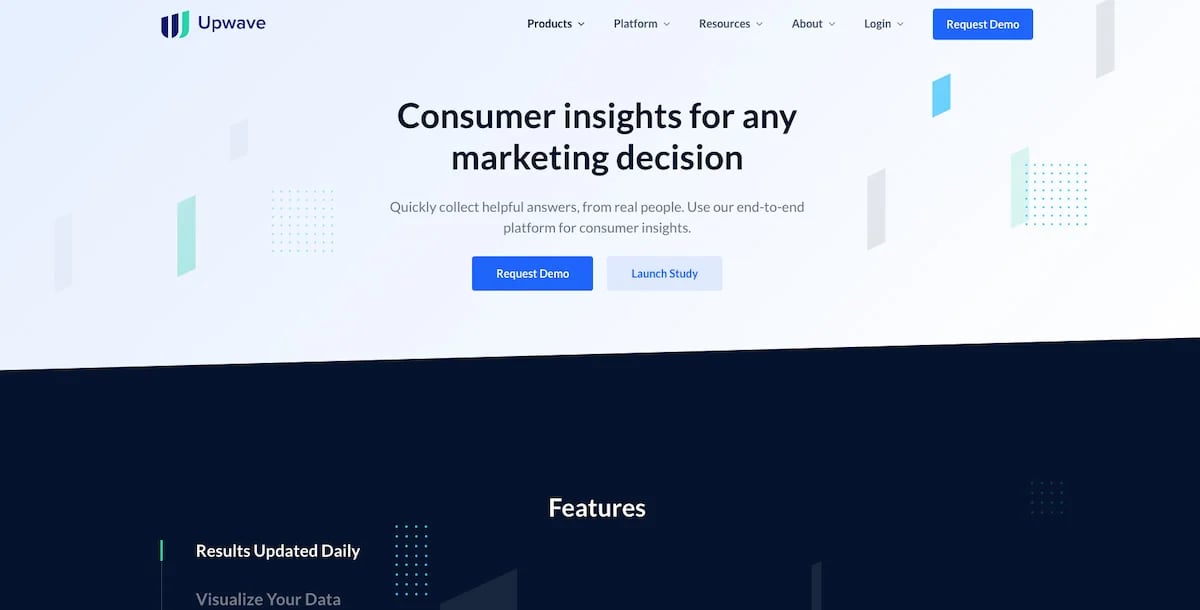
Upwave Instant Insights is a consumer research tool that’s part of the Upwave brand marketing platform. While it isn’t advertised as a survey creation tool, it allows you to launch market research surveys specifically to get consumer insights.
Instant Insights allows you to target audiences on Upwave’s partner ecosystem and visualize the data for easy scanning by key stakeholders and investors. One pro of using this platform is that Upwave distributes your survey to real people — not just people taking surveys for the money, which could skew the results.
To create a survey, you sign up on the Upwave platform, click your name in the upper right-hand corner, and click “My Surveys,” where you can create as many surveys as you want. For the Basic option, you have a 6-question limit, while the Advanced option allows you to include unlimited questions.
Pricing: $2/study participant (Basic); $3/study participant (Extended); $4/study participant (Advanced)
12. Loop11
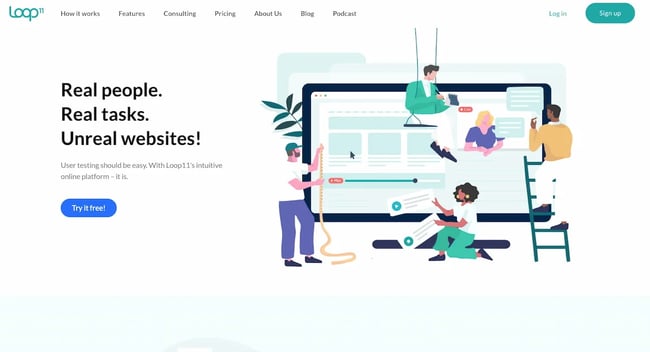
Loop11 is a user experience testing platform that allows you to test the usability of your website, study user intent, test the information architecture of your site, and examine how the user experience changes based on the device they’re using.
This tool is useful for market research because you can find out whether your target consumers find your site easy to navigate. You can also identify snags that prevent conversions.
Loop11 tests your site by making users perform tasks. They then complete a short question about how easy or difficult the task was to complete. Your product may be phenomenal, but unless consumers can buy it through your site, you won’t launch it successfully.
You can use Loop11’s participants or bring in your own.
Pricing: $63/month (Rapid Insights), $239/month (Pro), $399/month (Enterprise)
13. Userlytics
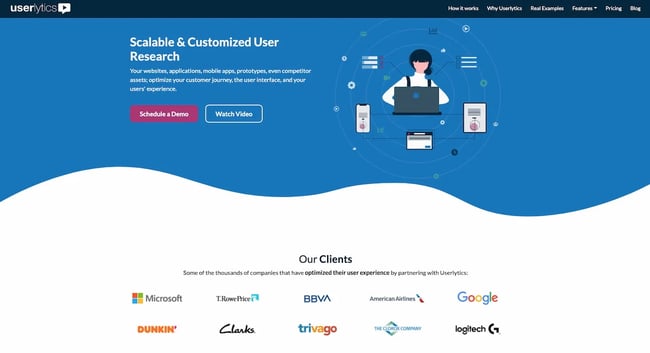
Like Loop11, Userlytics allows you to test the usability of your website, mobile app, and site prototype. You can target different devices, define a buyer persona, and disqualify participants based on screening questions.
Testing is based on tasks that your test-takers carry out. They then answer a simple question about the difficulty of the task. You can structure the question in various ways; you can leave it open-ended, provide multiple choices, or ask for a rating. Other formats you can use include System Usability Scale (SUS) questions, Net Promoter Score (NPS) questions, and Single Ease Questions (SEQ).
Userlytics performs both a webcam and a screen recording. You can compare the user’s answers with their reactions on video to understand how they feel when they’re interacting with your assets.
14. Temper
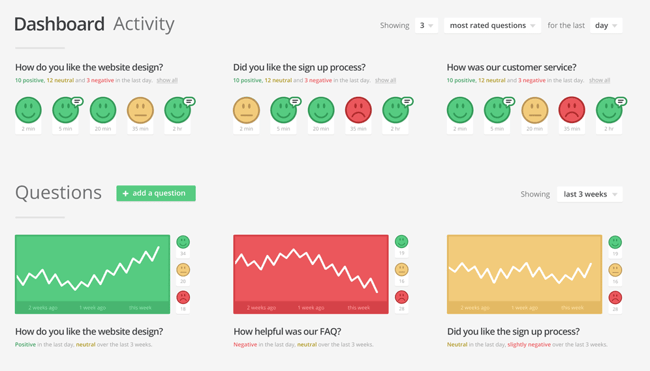
Sometimes you need a no-frills test to take the pulse of consumers. Temper allows you to create a question, grab a snippet of code, and pop it onto your website. The smiley face, “meh” face, and frown face make it easy for viewers to make a snap judgment.
One great way to use this tool is by adding the widget on a blog post announcing the launch of your new product. That way, you can find out general sentiment on the product before launching it. You can also add it to a product page, an email, or a landing page.
When you include the widget, you can change the question to something that’s tailored to your offerings.
Pricing: $12/month (Hobby), $49/month (Pro), $89/month (Business), $199/month (White Label)
15. NielsenIQ

NielsenIQ is a retail and consumer intelligence consultant that works with you to collect consumer insights, identify the best distribution channels for your product, and create a range of products that addresses the needs of your target buyers.
This service helps you look at your product launch from all angles and delivers forecasting data that predicts how your sales will perform upon launch. NielsenIQ can also run consumer insights surveys on their list of panelists and partners.
Because it operates like a consultant and not as a self-service software, NielsenIQ is a better option for established firms with a bigger product launch budget.
Pricing: Pricing available on request
16. Ubersuggest
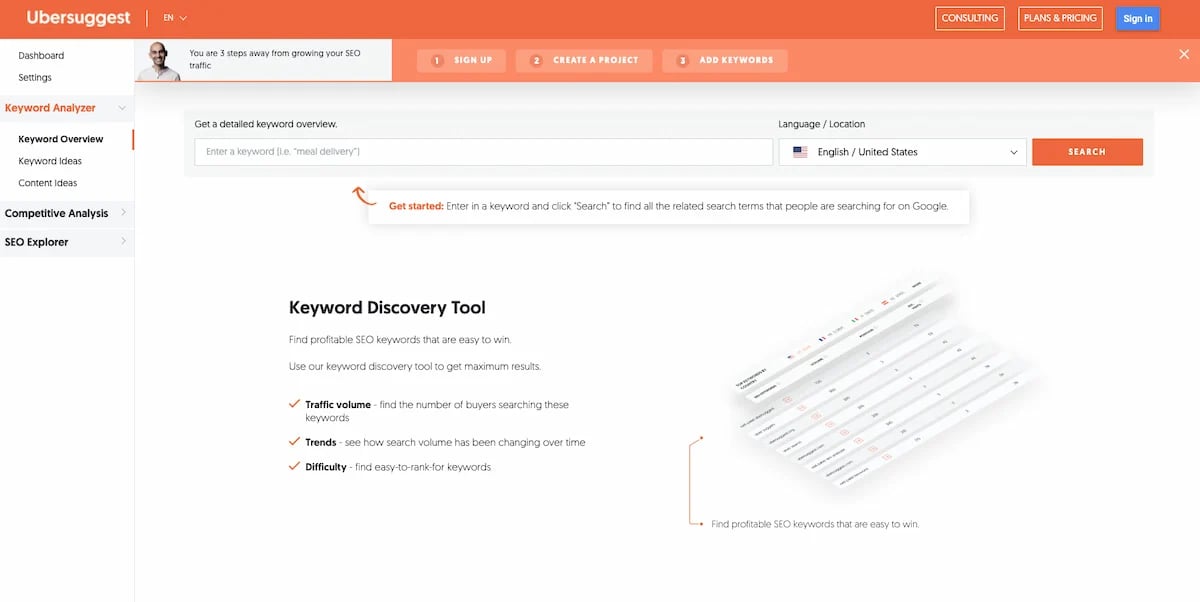
Ubersuggest is a simple tool for doing keyword and content research. You can input a phrase, and it’ll create a list of keyword suggestions. You can also see top performing articles and pages so that you get an initial understanding of the type of content that ranks for the keywords.
This tool is useful for market research because you can see who your top competitors are, how often your product is searched for, and whether there’s enough space in the market for the type of product you’re launching. You can also find out the questions your target audience asks in relation to the product. Each of these questions can be turned into a blog post that can inform your audience, increasing your brand authority and driving conversions.
Alternatives to Ubersuggest include Moz, Ahrefs, and SEMRush.
Pricing: Free; $29/month (Individual); $49/month (Business); $99/month (Enterprise / Agency)
17. Pew Research Center
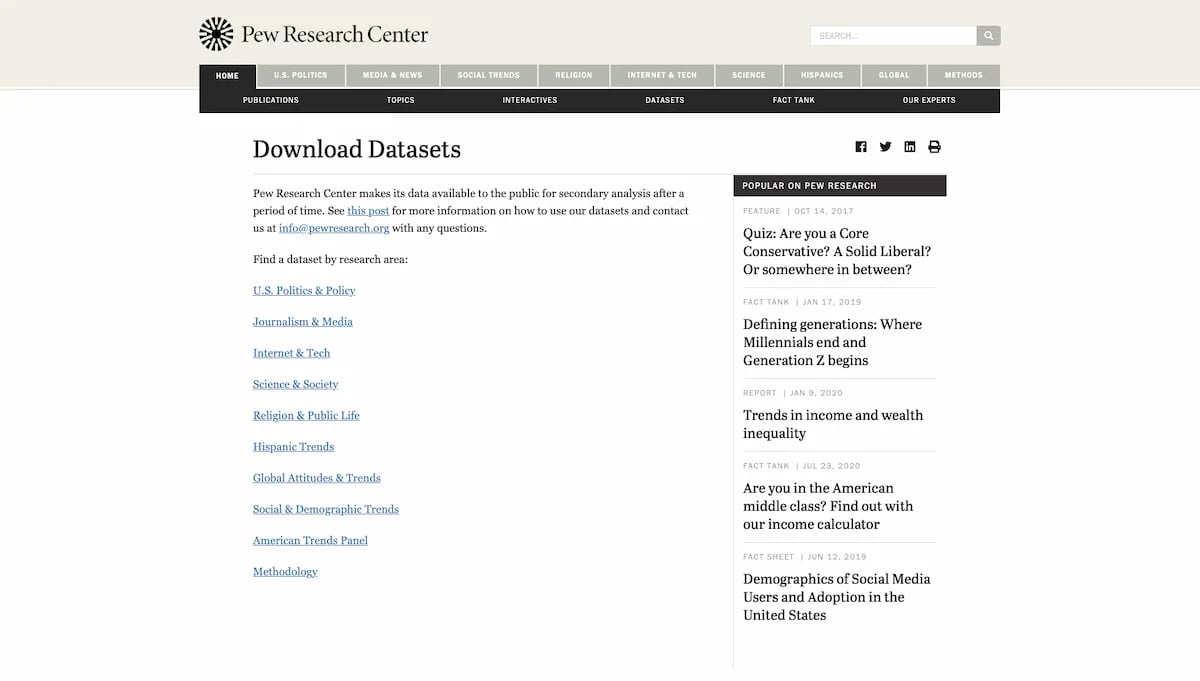
From economic conditions, to political attitudes, to social media usage, the Pew Research Center website has a ton of free research that you can use to better understand your target market. Best of all, the site has interactive articles that allow you to filter and sift through the data for more granular, targeted insights.
Topics include U.S. politics, digital media, social trends, religion, science, and technology.
Pricing: Free
18. BrandMentions
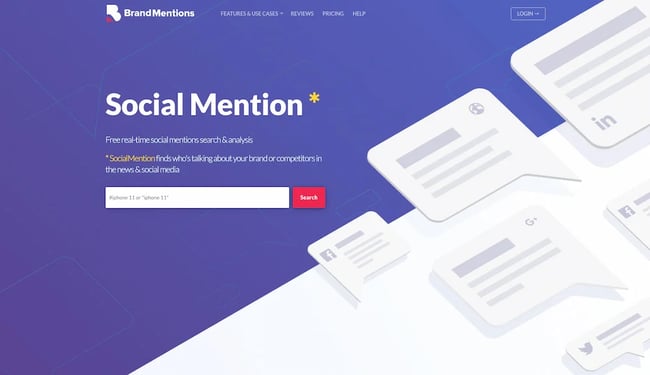
BrandMentions is a social media monitoring platform that can help you understand what your prospective customers are buzzing about online. Search for a keyword, and BrandMentions will show you recent social posts that contain that keyword, along with the context of its usage. After subscribing to the platform, you can also get sentiment analysis on the keyword.
You’ll also get other metrics such as Reach (how many people view the keyword per day), Performance (how many people engage with the keyword per day), and Mentions by Weekday (when people are mentioning the keyword).
You can use this tool for market research by finding out when people are looking for your product on social media sites. When you start announcing the new product, you can use insights from this tool to post about the launch at exactly the right time. It also allows you to find out how people are generally feeling about the type of product you’re launching. That way, you can better refine the tone of your campaigns.
Pricing: $99/month (Growing Business); $ 299/month (Company); $ 499/month (Enterprise/Agency)
19. Qualtrics Market Research Panels
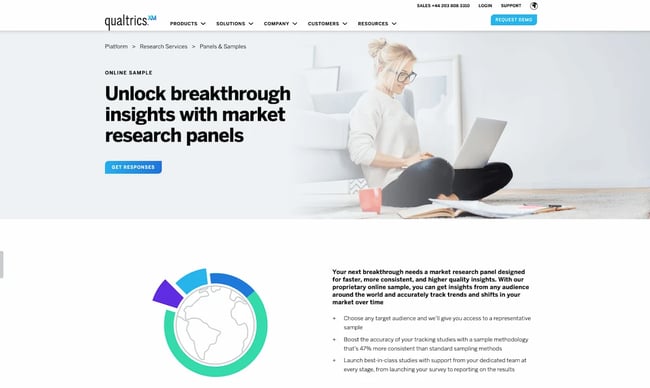
Qualtrics takes the pain of finding respondents for your market research surveys through an online sample service. After identifying your target audience, you can go to Qualtrics for access to a representative sample. You can either use your chosen survey software or use Qualtrics’ built-in platform for insights and feedback.
Pricing: Pricing available on request
20. Qualaroo
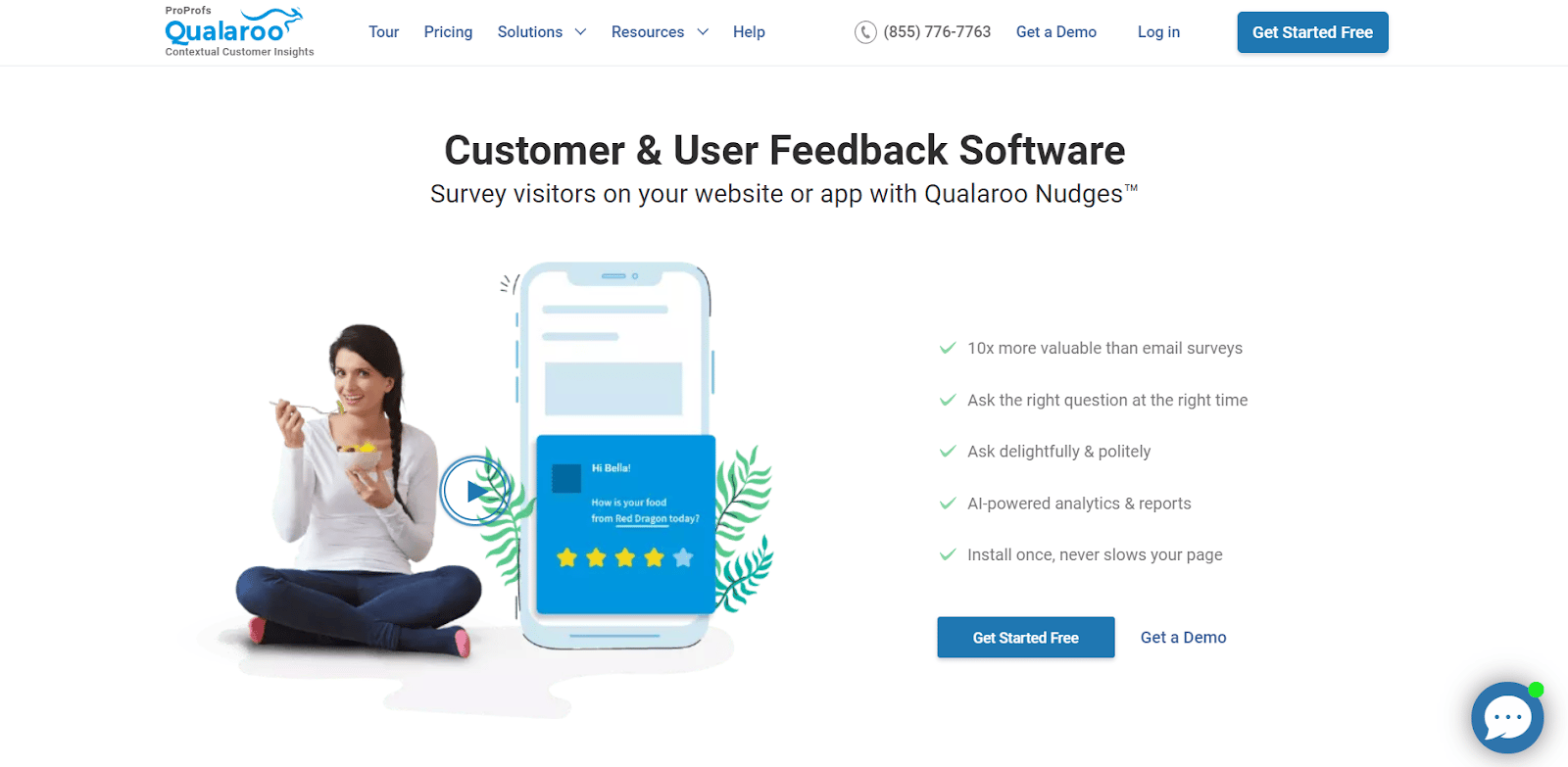
Qualaroo is an advanced user and market research tool that helps you understand your target market with targeted surveys. You can run surveys on over six channels at once (such as website, app, product, social media, and mail,) to get a 360-degree view of your existing and potential customers.
It comes packed with features like question branching, 12+ answer types, automatic survey language translation, in-depth audience targeting, pre-built survey templates, and an extensive repository of professionally designed questions.
You can create various market research surveys in minutes to collect data on the demographic, psychographic, and behavioral traits of your target audience. It can help you map customers’ expectations and preferences, create customer personas, and perform audience segmentation.
Qualaroo also promotes quick feedback analysis. Its in-built AI-based sentiment analysis and text analytics engine automatically categorizes the responses based on user moods. It also highlights the key phrases and words in real-time, saving hours of manual work.
Pricing: $80/month billed annually (Essentials); $160/month billed annually (Premium)
Conduct Market Research for a Successful Product Launch
Conducting market research is essential to successfully launch a product to market. With the tools we’ve shared, you can find out who’s looking for your product, why they need it, and how you can better market it upon launch, ensuring that it’s a success.
Editor’s note: This post was originally published in April 2016 and has been updated for comprehensiveness.

![→ Download Now: Market Research Templates [Free Kit]](https://no-cache.hubspot.com/cta/default/53/6ba52ce7-bb69-4b63-965b-4ea21ba905da.png)



![How to Optimize for Google’s Featured Snippets [Updated for 2024]](https://moz.com/images/blog/Blog-OG-images/How-to-Optimize-for-Googles-Featured-Snippets-OG-Image.png?w=1200&h=630&q=82&auto=format&fit=crop&dm=1724004002&s=13df73104762982790dab6dc8328023f)


